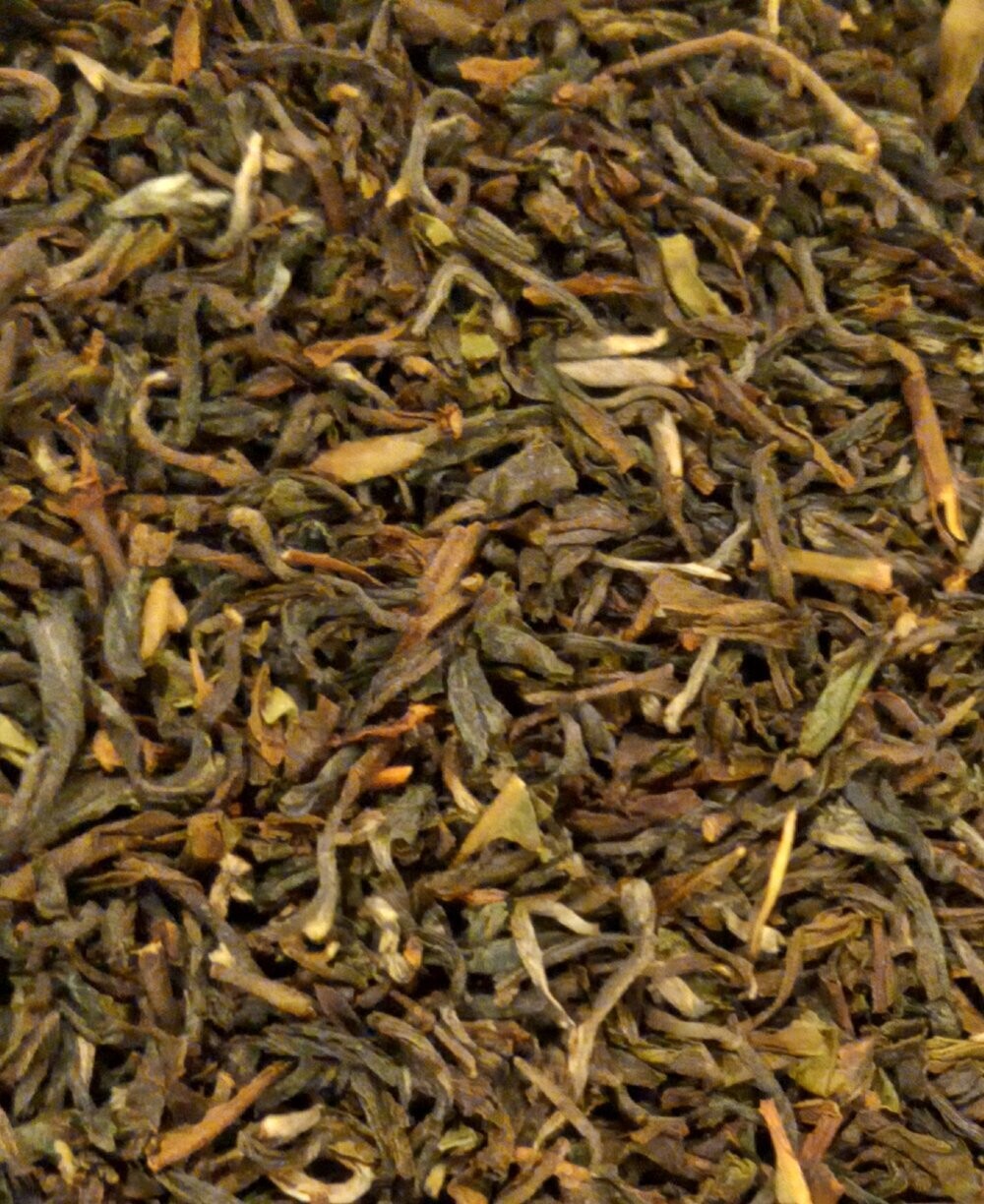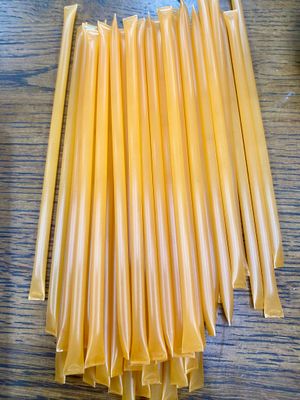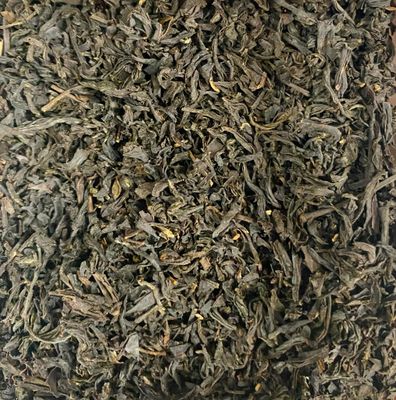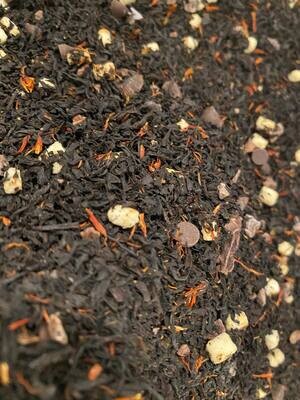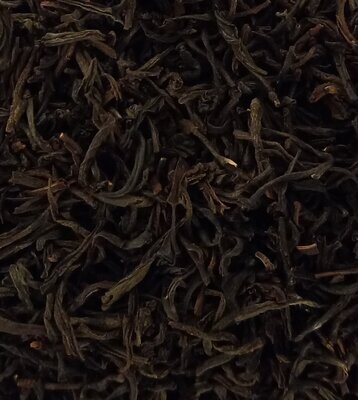Darjeeling Tea, Organic
Grown in Darjeeling, a town in eastern India and celebrated around the world, this black tea yields a light and unabashed cup, with a pleasing apricot color. Smooth and with a slight floral note, Darjeeling teas are usually described as having musky spiciness with a cool finish. Guaranteed to satisfy, experience the “champagne” of black teas in the afternoon or anytime!
Darjeeling tea is named after its place of origin – a town in the state of West Bengal situated in the foothills of the Himalayan Mountains of eastern India. Also known as Queen of the Hills, the Darjeeling region is landscaped by acres of plantations referred to as “tea estates.” Just like French champagne and Italian prosciutto, authentic Darjeeling tea is protected by a Geographical Indications of Goods registration, which means its cultivation is limited to these estates and produced under very specific conditions.
Tea flavor and character is affected by the way the leaves are processed, which determines the rate of oxidation. Technically speaking, because Darjeeling has a low level of oxidation the tea is actually an oolong variety, even though it’s typically marketed as a black tea. Flush is another factor, which is determined by the time of year the tea is harvested. First flush tea harvested in early spring yields a mild color and flavor, while mid-summer second flush produces a rich golden color and a full-bodied flavor reminiscent of muscatel grape with a spicy-sweet finish. The type of Darjeeling typically found in masala chai is harvested when monsoon season subsides and the dark amber brew with full body is the result of an autumn harvest.
Origin: India
